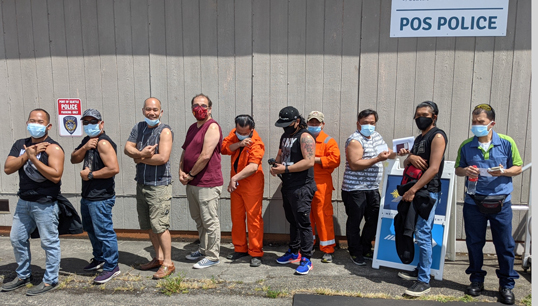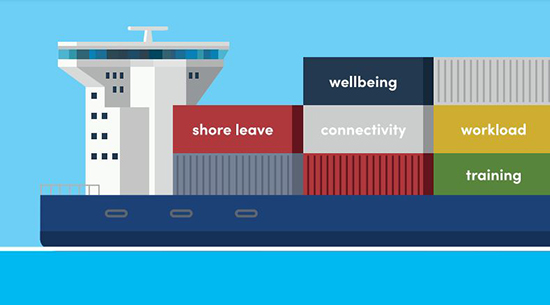Call for urgent vaccination boost as Seafarers Happiness Index drops to an all-time low
29 July 2021

The Mission to Seafarers has released the latest Seafarers Happiness Index report, revealing a grim picture of seafarer welfare, with overall happiness dropping to an all-time low since the beginning of the Covid-19 pandemic.
Given the challenges facing crews, the fall in the level of general happiness, or wellbeing of seafarers, is perhaps no surprise. The main shoutouts rest on three core concerns – growing restlessness, boredom, fatigue and the pressures of not knowing when or if seafarers will get back home due to the crew change crisis. The lack of stimulation was even described as the 'zombification of the workforce' with massive implications for operational safety and standards.
The latest report, which covers the second quarter of 2021, showed that seafarers are becoming frustrated with constantly being in the same environment. Key concerns included the crew change crisis, the lack of shore leave, delays in seafarers' keyworker status being recognised and the lack of wider vaccination programmes by governments and industry.
One seafarer who responded to the survey mentioned having experienced eighteen-months without setting foot on land, highlighting the dramatic need for the industry to do more.
The report acknowledges that the maritime industry has started putting vaccination plans into action with leading flag states and big seafaring nations including Cyprus, Singapore, Philippines, Germany and the USA leading the way at their respective seafarer centres. However, with happiness levels down to 5.99 out of 10, the index indicates it is time for the industry to ramp up international progress.

Responses from seafarers also revealed a worrying trend with reports of companies − namely manning agents − lying to crew, withholding pay, underpaying, and even threatening seafarers, despite longer hours and rising workload for seafarers. Some seafarers reported having to work 11-12 hours daily, compared to 8-9 hours before the COVID-19 pandemic.
In previous Seafarers Happiness Index reports, it was possible to see a rising tide of optimism as crews thought that either the pandemic was receding, or that vaccinations would lift the pall of the crew change crisis. The latest responses show that if people know when they are going home, there is hope. However, if there is doubt, fear and uncertainty, then everything becomes a problem, and the pressures on board seem to be ramping up.
Secretary-general of The Mission to Seafarers Andrew Wright said: 'As vaccination programmes in many countries have progressed, seafarers have once again been left behind. This quarter's Seafarer Happiness Index results are not only concerning but they suggest that the situation is going backwards after the progress that had been made in the last quarter.
'The only sustainable solution is to once again call on governments and the industry to designate seafarers as keyworkers and speed up the vaccination process for crew, which may be the only hope of getting them home to their loved ones, as well as permitting them shore leave.'
The regular reports are carried out with support from Wallem Group and the Standard Club.
- Download the full Seafarers Happiness Index report
- Each of the quarterly results are also broken down into themed report sections on the happyatsea.org website
Tags
More articles
Nautilus and UKCS call for the UK government to offer vaccinations to visiting seafarers
Nautilus International's general secretary Mark Dickinson and CEO of the UK Chamber of Shipping (UKCS) Bob Sanguinetti have signed a joint letter to the Secretary of State, asking that the country actively offer vaccinations to seafarers visiting British ports.
UK charity QVSR plays its part in a global vaccination initiative for visiting seafarers
WHO decision to prioritise seafarers' vaccination welcomed
The World Health Organisation (WHO) has updated their vaccination guidance to include prioritising seafarers for vaccination.
